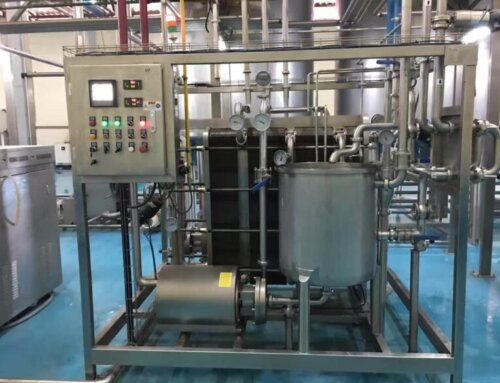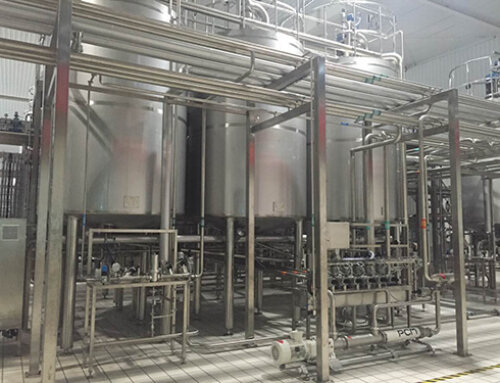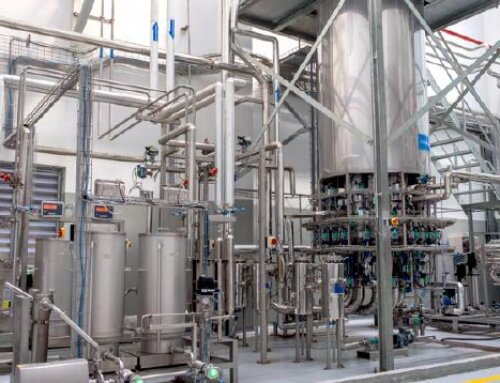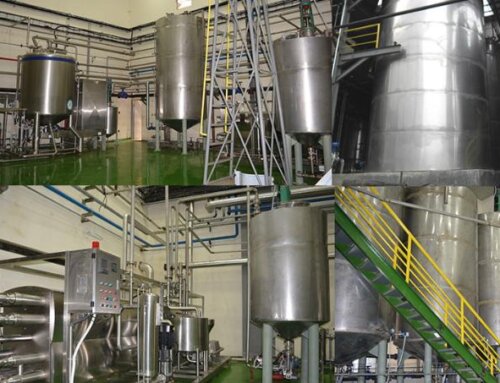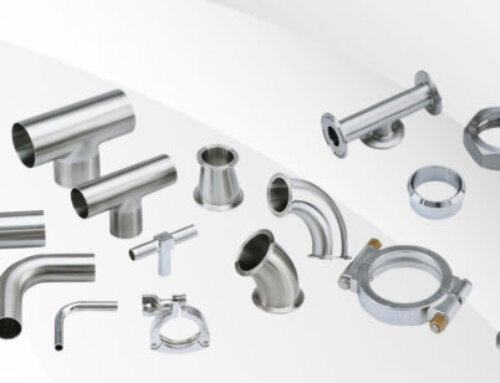Description Of Lemon Processing Plant
Lemon is one of the citrus fruits family, the lemon and lime are smaller sizes, have higher acid content and lower sugar content than other citrus fruits(orange, tangerine, etc.).
The lemon and lime fruit can proceed into juice, water, pulp, oil, dry lemon slice, and the oil is one of the highest quality and greatest commercial value in the citrus processing industry. The juice is the main product of the lemon processing plant.
Lemon fruits are mainly composed of the lemon peel, lemon segment, juice sac, seed, membrane wall, oil gland, and the lemon oil is extracted from seeds, lemon juice and pulp is extracted from fruit sac and membrane wall.
The lemon processing plant includes lemon washing and sorting system, lemon fruits storage bin, lemon oil and juice, pulp extraction system, lemon oil finishing and refining system, lemon juice filtration and finishing system, lemon juice debittering system, lemon juice concentrating system, lemon juice sterilizing and filling system.
The capacity of the lemon processing line is from 1 ton per hour to 50 tons per hour, and the end products like lemon juice, lemon water, and lemon oil can be filled into the bottles, and concentrated lemon juice can be filled into aseptic bags.
Lemon Processing Plant End Products and Package
Lemon juice/Lemonade: As lemon juice flavor and color is less attractive than orange juice, most of the lemon juice/lemonade is not 100% NFC juice. The lemon juice yield rate is about 30% from the fresh lemons, when the lemon juice is extracted, will add water, sweeteners, flavors, nutrients, carbon dioxide, preservatives, etc. to make into the lemon juice. In general, 1 ton concentrated lemon juice can yield about 8 tons single strength lemonade. The end products can be filled into bottles, cans or other containers.
Concentrated lemon juice: The concentrated lemon juice is produced by a falling film evaporator after the juice is extracted. As the lemon juice soluble solids are citric acid, the lemon concentrate is described as grams of equivalent citric acid per liter of solution(GPL), the common concentration is 500±5GPL, which is about 57 Brix. The concentrated lemon juice is usually filled into aseptic bags in bulk, it is raw ingredients for making juice or using the food ingredients.
Lemon oil: The lemon oil can be extracted from lemon peel, the oil yield rate is about 2-4%, the lemon oil is in high value and price due to containing high content aldehyde. The lemon oil after extracted, then through finishing and polishing, the refined oil can be filled into small plastic bottles. The lemon essential oil has a wide range of uses in food, medicine, daily chemical products and chemical industries.
Dry lemon chips: Fresh lemon after washing, sorting, cutting into slices, then put the lemon slice on the tray and transfer to the dryer, drying temperature controlled at 70℃ for 5 hours, then we can get the dry lemon slice.
Dry lemon powder: Lemon powder is a versatile ingredient used in various culinary applications, including baking, cooking, beverage mixes. The production process involves selecting ripe lemons and washing them to remove impurities. The outer zest or peel is then carefully removed and dried using methods such as air drying or dehydration. Once dry, the zest is ground into a fine powder, sieved to ensure uniform texture, and packaged in airtight containers. The resulting lemon powder retains the flavor, aroma, and nutritional properties of fresh lemons.

Lemon Processing Plant Technological Flowchart
The lemon processing flowchart is similar to other citrus processing lines, please check the below for reference:

Lemon Processing Plant Key Machine Introduction
Lemon washing and sorting machine
Fresh lemons are delivered to the factory, where they are visually inspected and sorted. Damaged, moldy, or underripe fruits are removed to ensure consistent juice quality.
The selected lemons are thoroughly washed using bubble washers or brush rollers to remove dirt, pesticides, and contaminants from the peel surface.

Lemon juice extraction machine
According to the size of the lemon and lime, different juice extractors will be used. For fruit diameters below 60mm, the roller-type juice extractor is used; for fruit diameters between 60-100mm, the cup-type citrus juice extractor is used. After the lemon fruits going through juice extractors, the lemon seeds, peels, pulp and juice are separated.

Lemon pulp removing system
After the lemon juice is extracted, there are about 20% pulp in the juice, if we need to get the juice, we need to use the scrape finisher and centrifuge separator to remove the pulp in the juice, after refining and separating, there are 3% or less pulp in lemon juice. The reason why we need to remove the pulp in lemon juice is that the lemon pulp will stick to the inside surface of the tubes when evaporating and sterilizing and make the juice burn, it can also reduce the bitterness and viscosity of the lemon juice by reducing the pulp in the juice.

Lemon juice debittering system
Lemon and lime fruit juice has a harsh flavor due to higher acid content. There are two types of commercial debittering systems used to reduce the bitter component in lemon juice. The DOW system involves heat treating the juice to a minimum temperature of 48℃ and deoiling to 0.015% oil. Then the process requires centrifuging the juice pulp to about 1–3% and passing the depulped juice through an absorption resin to selectively absorb the limonin. Limonin levels as high as 40 ppm enter the debittering system and are reduced below the generally accepted taste threshold of 7 ppm.

Lemon juice evaporator
The lemon juice evaporator can adopt the falling film evaporator to remove water in lemon juice, and the falling film evaporator can equip one aroma recovery system. Usually, the lemon juice will be concentrated from 4 Brix to 55 Brix with low-temperature concentration, and one effect or several effect evaporators can be used according to customers’ processing capacity and steam recycle requirements.

Lemon juice pasteurization machine
The plate pasteurizer is heat the juice to a temperature for sufficient time and to assure practical sterility as well as cloud stability by inactivating natural juice enzymes. A temperature of 77°C for 30 seconds is used. The juice is cooled immediately to 4℃ after pasteurization by passing through the heat exchanger.
For the concentrated lemon juice, the tubular sterilizer will be used to kill the bacteria, if the end products is for aseptic filling, then the sterilizing temperature needs to reach 125℃; and if the lemon juice is cold filling into containers, then the pasteurization will be OK, 85-95℃ hold for 15S.

Lemon juice filling machine
The lemon juice after pasteurization or sterilization will be filled into the bottles, bag-in-box containers, and pouches according to different uses for the end products, and the juice can be hot filled into the bottles, pouches, or cans for B2C business, or filled into the cartons, drums for B2B business aseptically.

